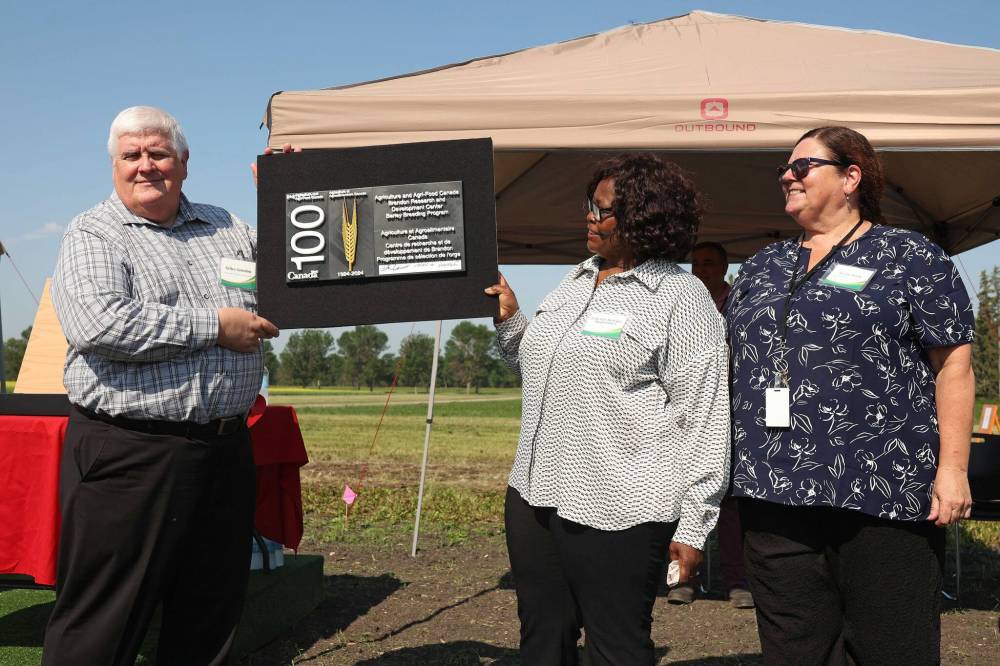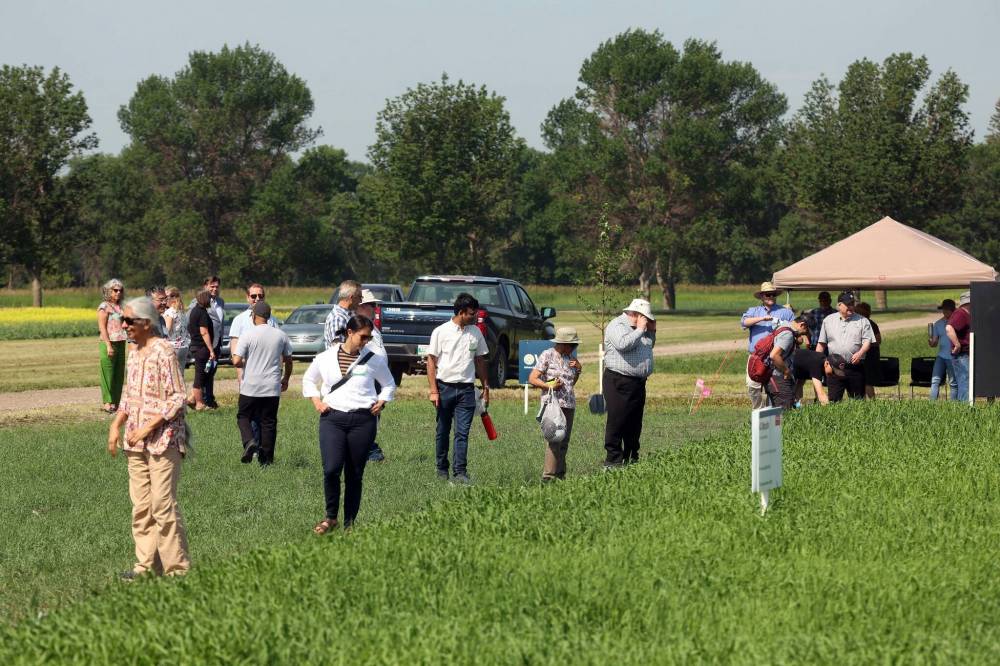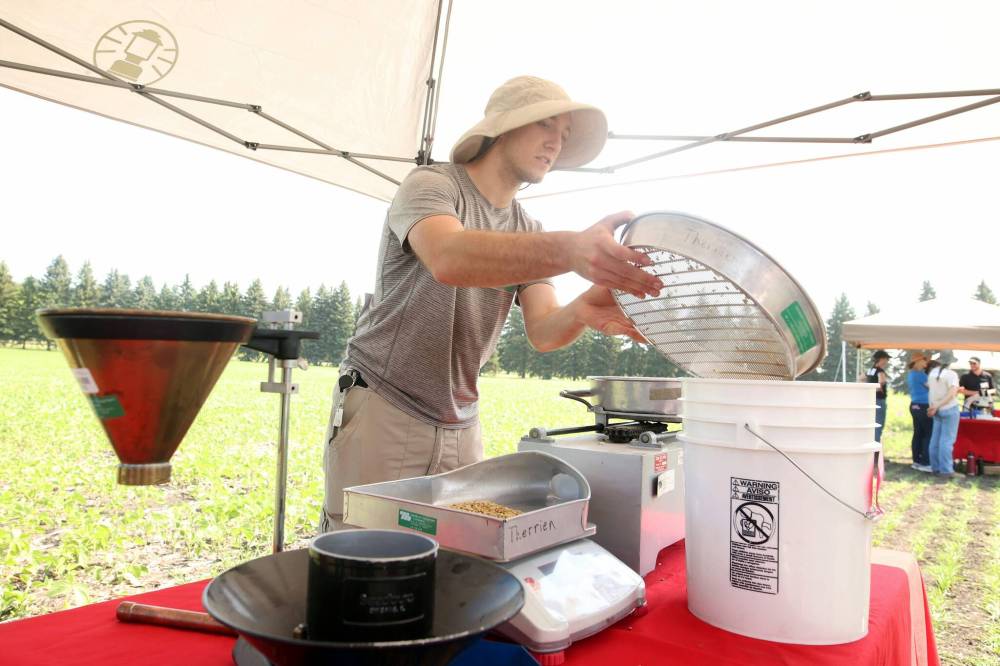Centre celebrates 100 years of barley research
Advertisement
Read this article for free:
or
Already have an account? Log in here »
We need your support!
Local journalism needs your support!
As we navigate through unprecedented times, our journalists are working harder than ever to bring you the latest local updates to keep you safe and informed.
Now, more than ever, we need your support.
Starting at $15.99 plus taxes every four weeks you can access your Brandon Sun online and full access to all content as it appears on our website.
Subscribe Nowor call circulation directly at (204) 727-0527.
Your pledge helps to ensure we provide the news that matters most to your community!
To continue reading, please subscribe:
Add Brandon Sun access to your Free Press subscription for only an additional
$1 for the first 4 weeks*
*Your next subscription payment will increase by $1.00 and you will be charged $20.00 plus GST for four weeks. After four weeks, your payment will increase to $24.00 plus GST every four weeks.
Read unlimited articles for free today:
or
Already have an account? Log in here »
Hey there, time traveller!
This article was published 12/07/2024 (474 days ago), so information in it may no longer be current.
To measure the impact of the 100 years of barley breeding research done at Agriculture and Agri-Food Canada’s (AAFC) Brandon Research and Development Centre, one needs only look at one of the varieties it produced.
Over its history, 44 metric tonnes of AC Metcalfe malting barley have been grown, resulting in the production of 300 billion bottles of beer.
The centennial of the program and the 40 different barley varieties it has produced was celebrated at the centre, located off of Grand Valley Road, on a sunny Thursday morning.

Federal officials Gilles Saindon, Felicitas Katepa-Mupondwa and Susan Bach unveil a 3D-printed plaque recognizing the centennial of the centre’s barley breeding program on Thursday. (Photos by Tim Smith/The Brandon Sun)
Figures from the program’s past and present gathered in one of its fields, next to rows of all these different varieties of barley and historical equipment used to cultivate it, to reminisce about its successes.
The genesis of the program was a desire to cultivate barley that could thrive on the Prairies as those from Eastern Canada and Europe were ill-suited to the climate, explained AAFC research scientist Ana Badea.
During the 10 decades of the program’s existence, new types of barley intended for food, malting and livestock feed have been produced in participation with growers, distributors and other research facilities and the Crop Development Centre at the University of Saskatchewan.
On top of adapting varieties to new climates, scientists also worked to develop species resistant to disease.
A now-retired 30-year veteran of the Brandon centre and the developer of AC Metcalfe, Bill Legge, told those assembled that developing varieties resistant to a fungal disease, fusarium head blight, was a major challenge in the 1990s, but three varieties were eventually produced.
Brian Rossnagel is a professor emeritus of the Crop Development Centre originally from Manitoba. He talked about how in his early years in the agriculture sector, he worked as a summer student at the Brandon centre while working on his graduate thesis.
In 1974, near where the crowd was assembled Thursday, he said he pitched a tent on the field while harvesting barley for his thesis with a sickle. The director of the centre, whose home overlooked the field, was apparently unimpressed.
“He got rather upset, but I was finished so that was basically it,” Rossnagel said. “But I got reamed out when I got back to Winnipeg. But Norm was a good guy. He understood what I was doing and why I had done it, but asked me not to do it again.”
Michelle Beaith with FP Genetics said that one of AC Metcalfe’s successors, AC Synergy, has also enjoyed success.

Visitors explore barley strain plots and interactive displays during the centennial celebration of Agriculture and Agri-Food Canada’s Brandon Research and Development Centre barley breeding program on Thursday.
“It had the highest commercial acreage for a malt variety in 2023, around 32 per cent,” Beaith said. “It has great agronomics, outstanding yield, so we’re very grateful to have this variety … Congratulations on 100 years and we’re looking forward to 100 more.”
Canada’s beer industry contributes $13.6 billion to Canada’s gross domestic product and employs 149,000 Canadians, said Gina Feist of the Brewing and Malting Barley Research Institute.
“This program in Brandon contributes to this Canadian success story,” she said.
Steve Tomtene, a barley farmer from Birch Hills, Sask., spoke with pride about how he had the opportunity to name a hulless variety developed at the Brandon centre after a loved one.
“We’re very thankful to name that variety after our eight-year-old granddaughter who has long, blonde hair and so we named Beckett after her,” he said.
Beyond the new varieties developed in Brandon, the centre and the program also have a strong role in training high school and university students, said Felicitas Katepa-Mupowndwa, the director general of AAFC’s science and technology branch.
That, she said, will guide the program toward future successes benefiting all Canadians.
After the speeches, visitors were given the chance to speak with research assistants about their work at the centre, before visiting the fusarium head blight nursery and hearing additional remarks from dignitaries that included Mayor Jeff Fawcett.
Speaking to the Sun after the event, Fawcett said people take for granted what goes on at the research station.

Summer student Jack Claussen shows visitors how the assortment and sizing shaker works during the centre’s centennial celebration on Thursday.
“They’ve done amazing stuff,” he said.
“I think they were telling me that if you’re drinking Canadian beer of any kind, there’s a good chance that barley that was created in the research station in Brandon is in that drink, which is kind of neat … It’s really impressive and they have some people that are deep thinkers doing really good research.”
He added that the city is grateful for the federal government’s continued support for the research station.
» cslark@brandonsun.com
» X: @ColinSlark
